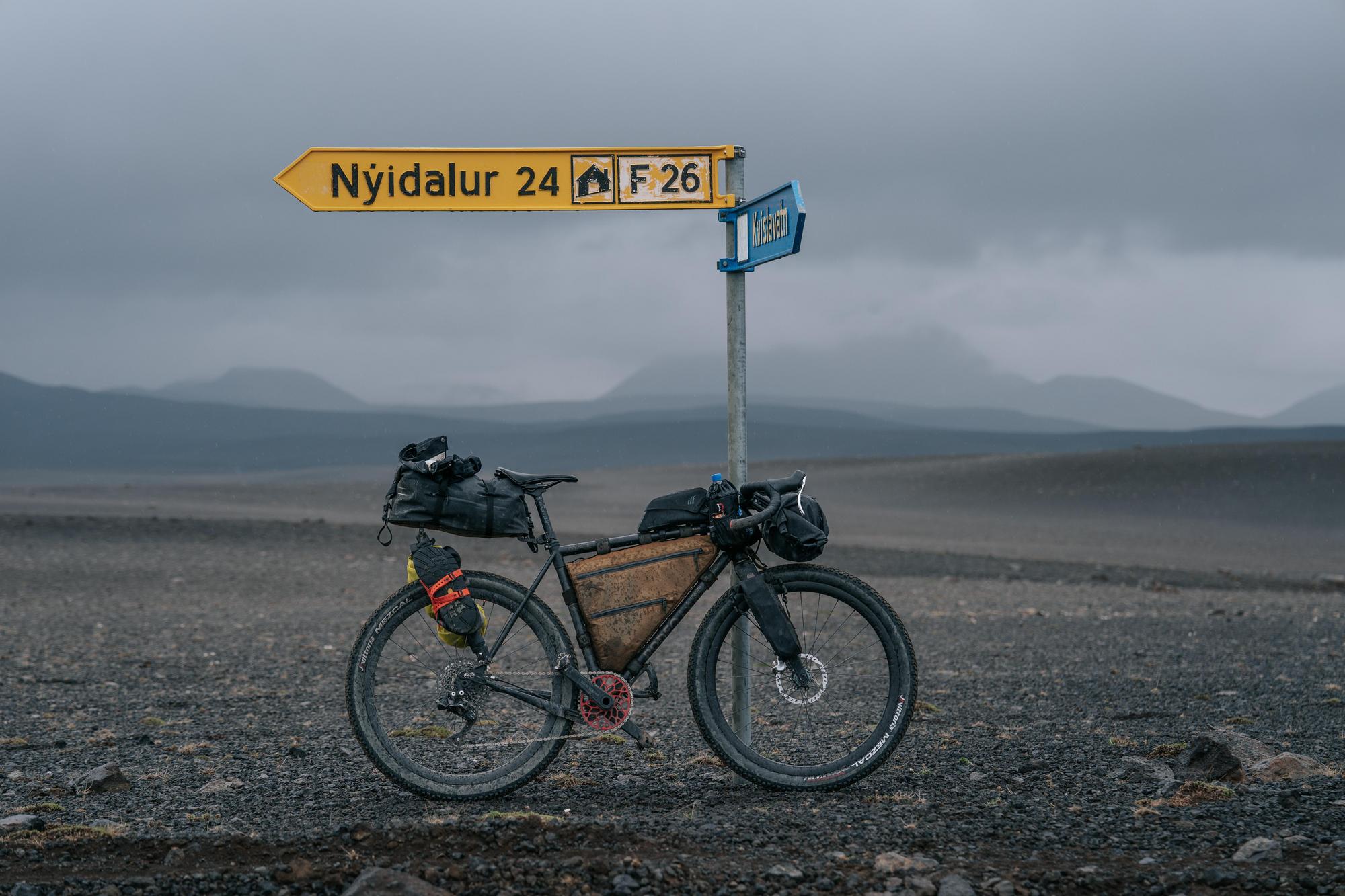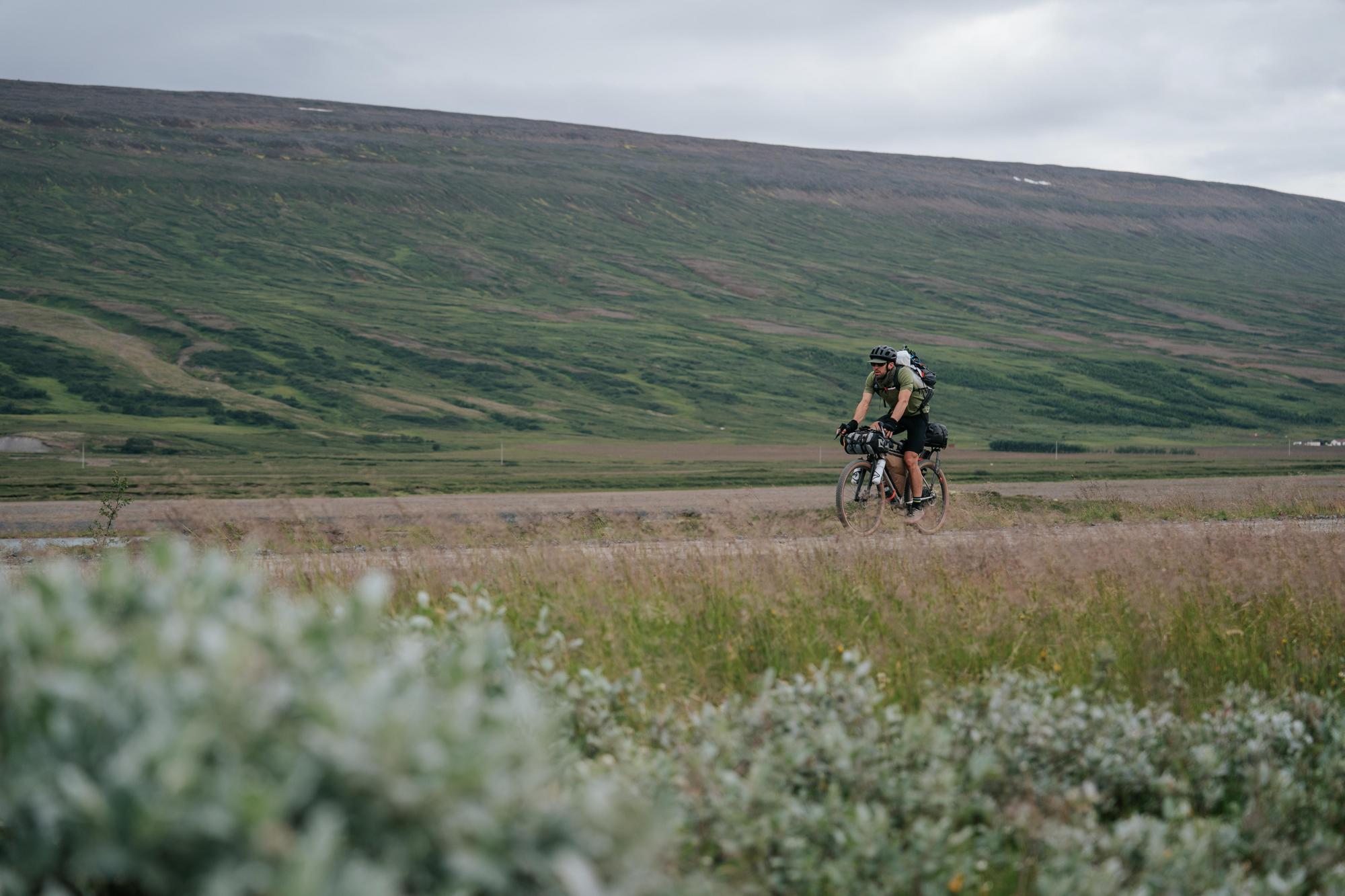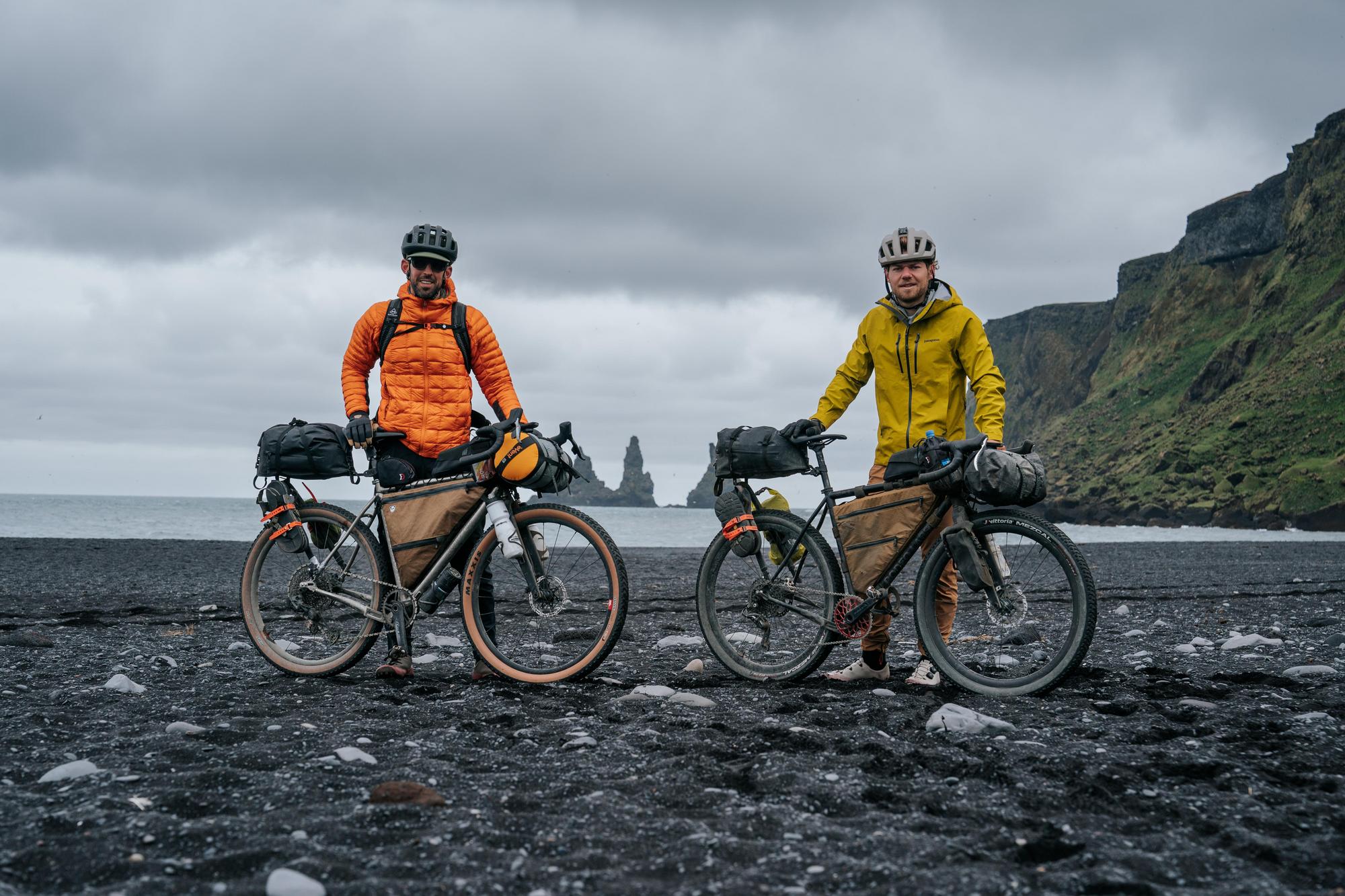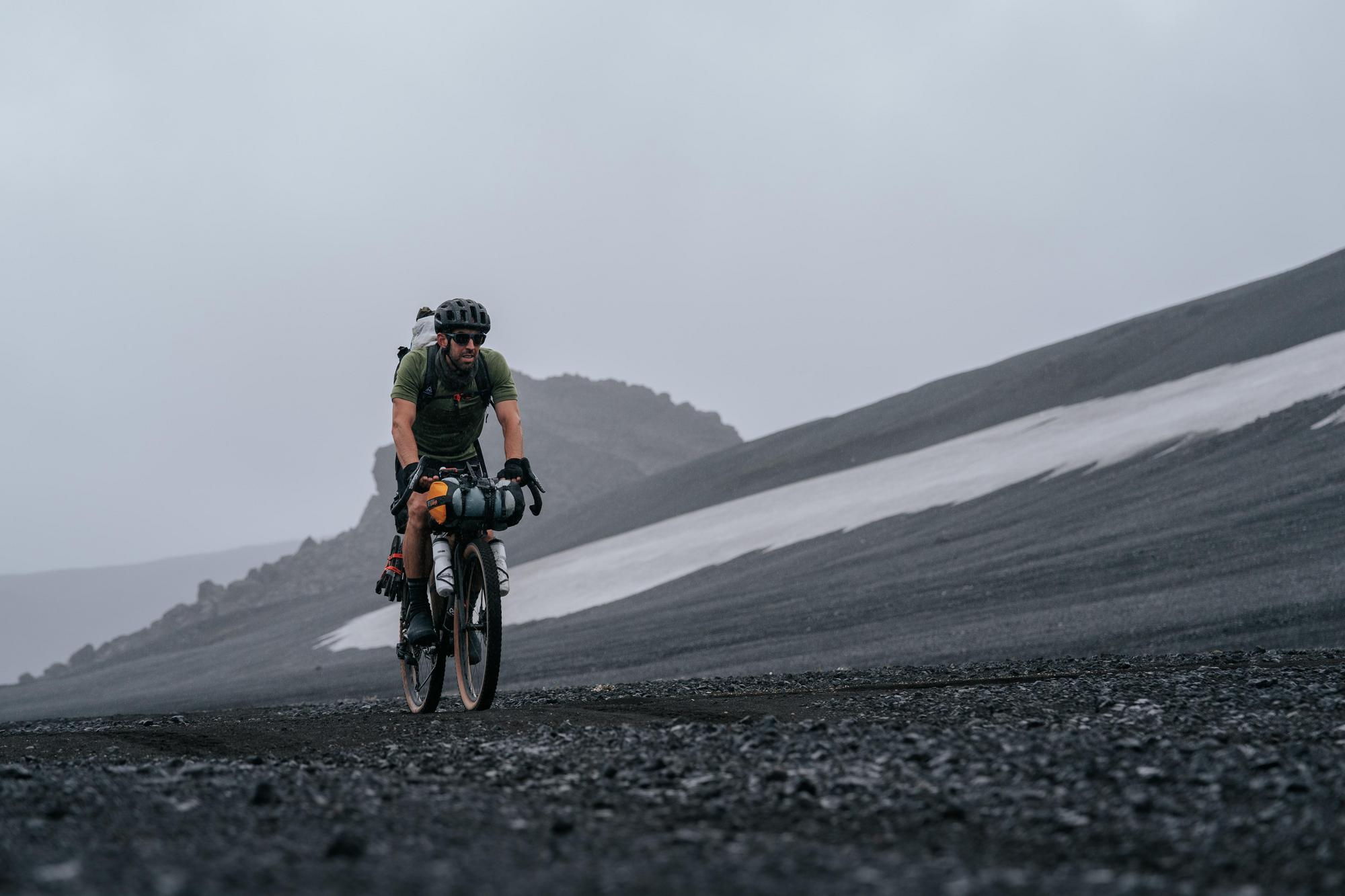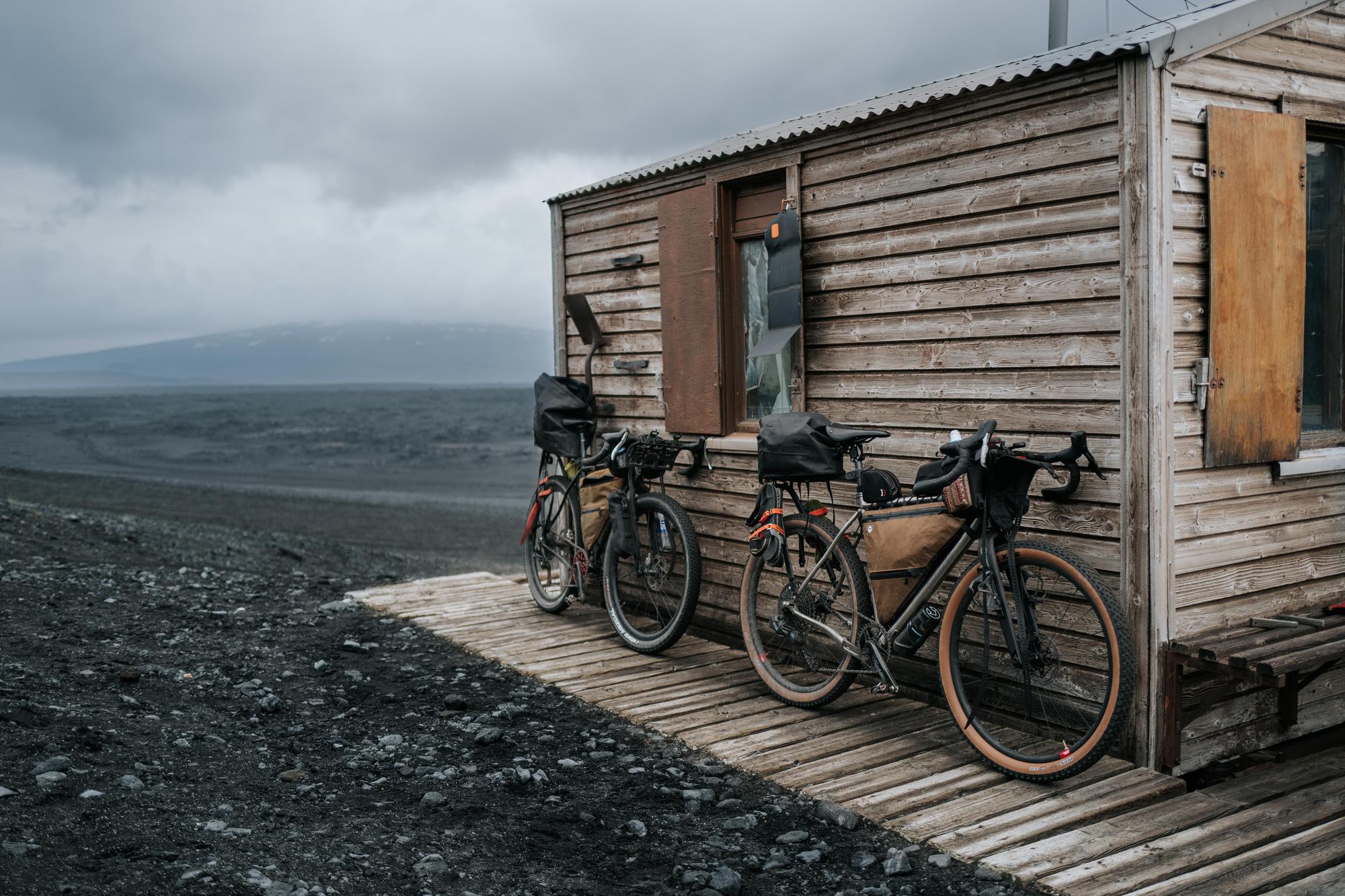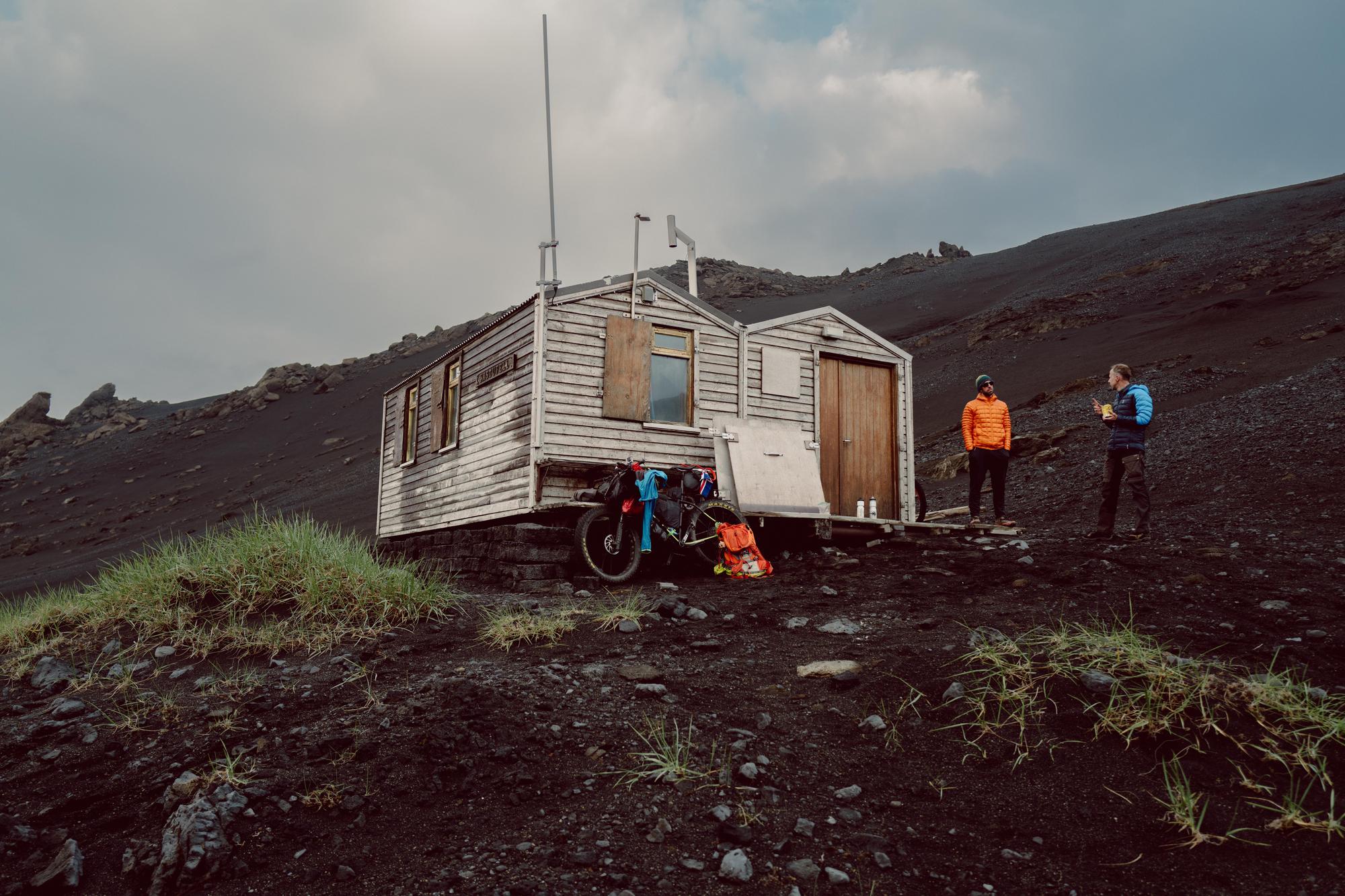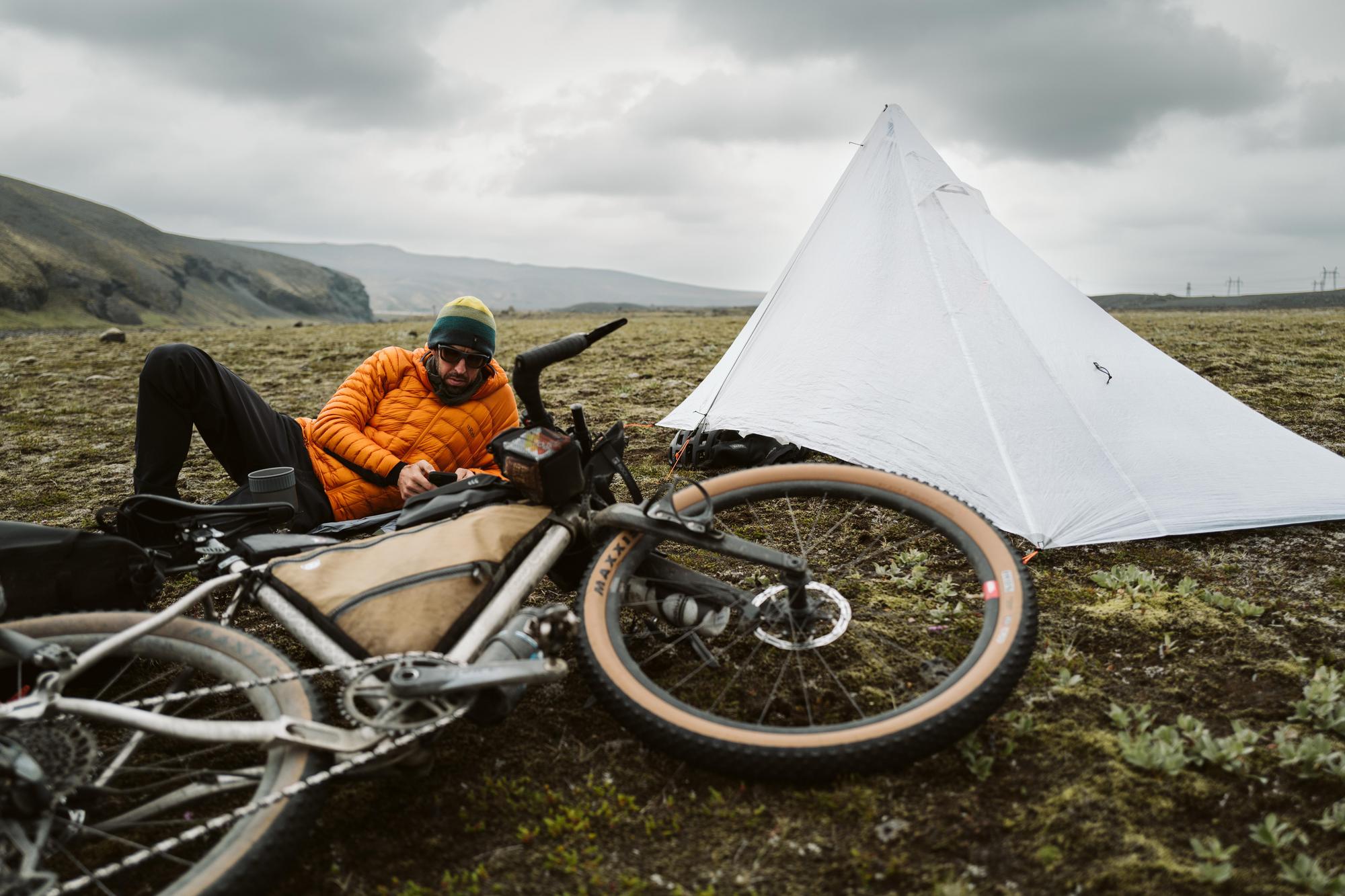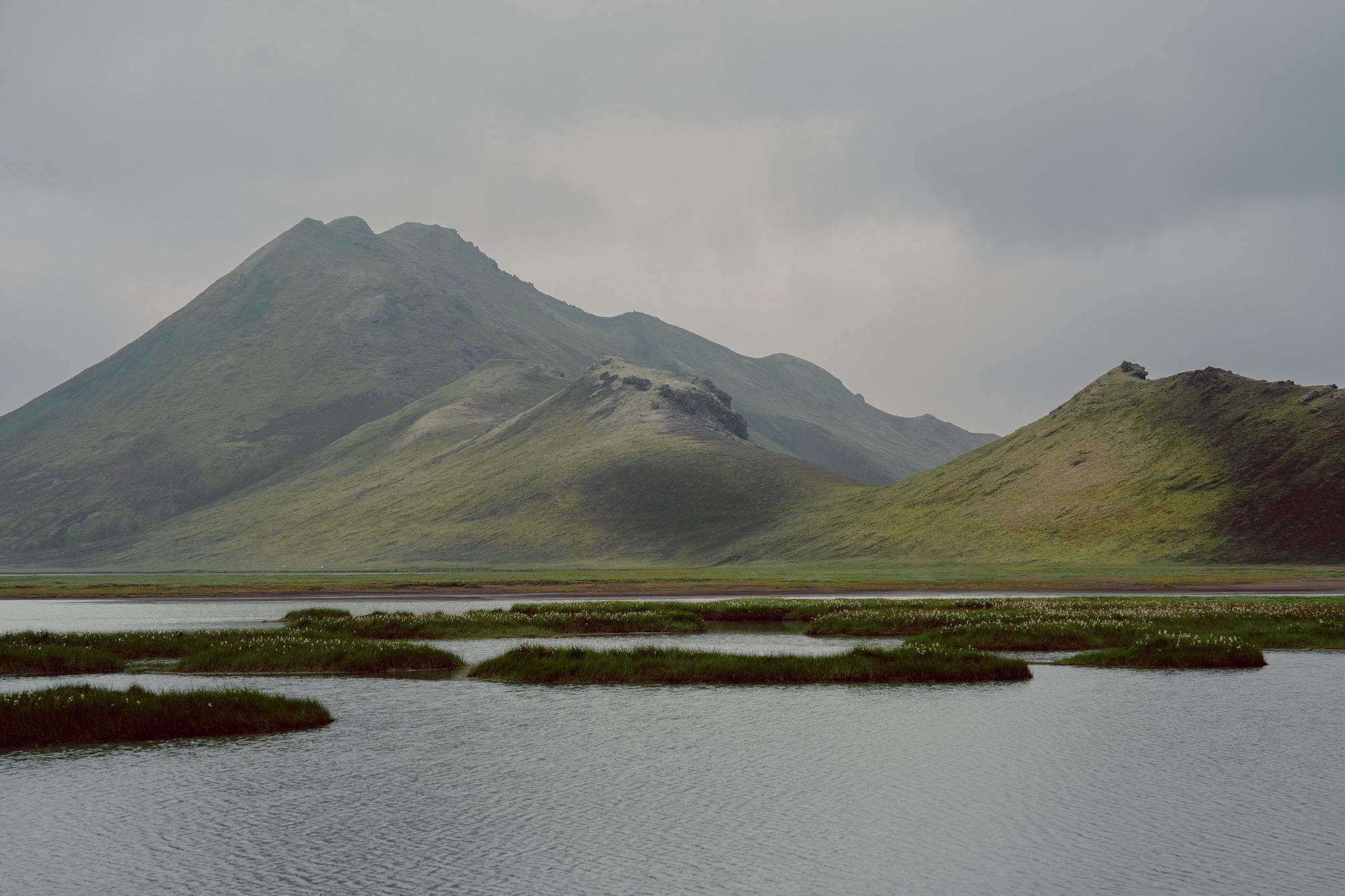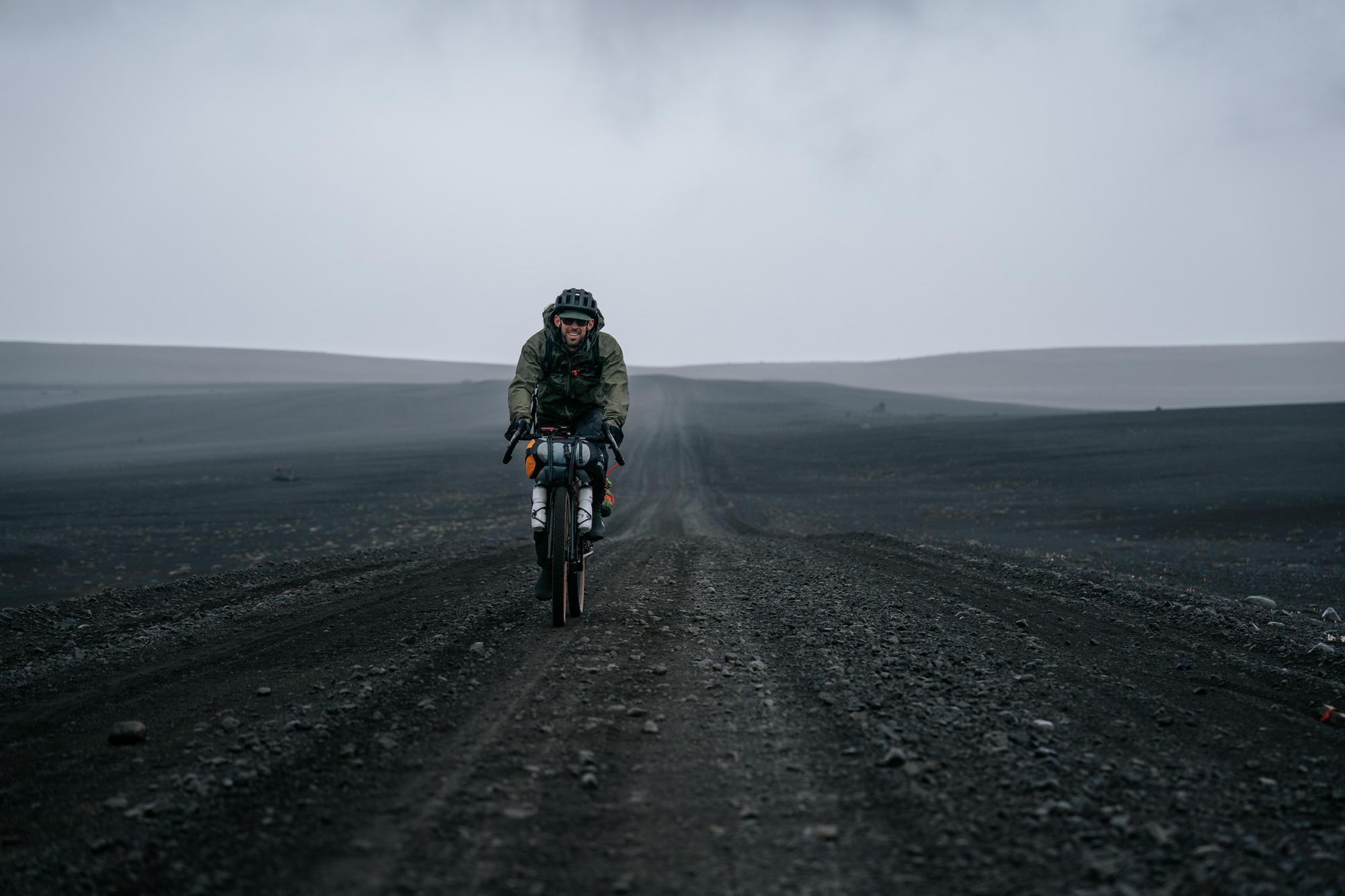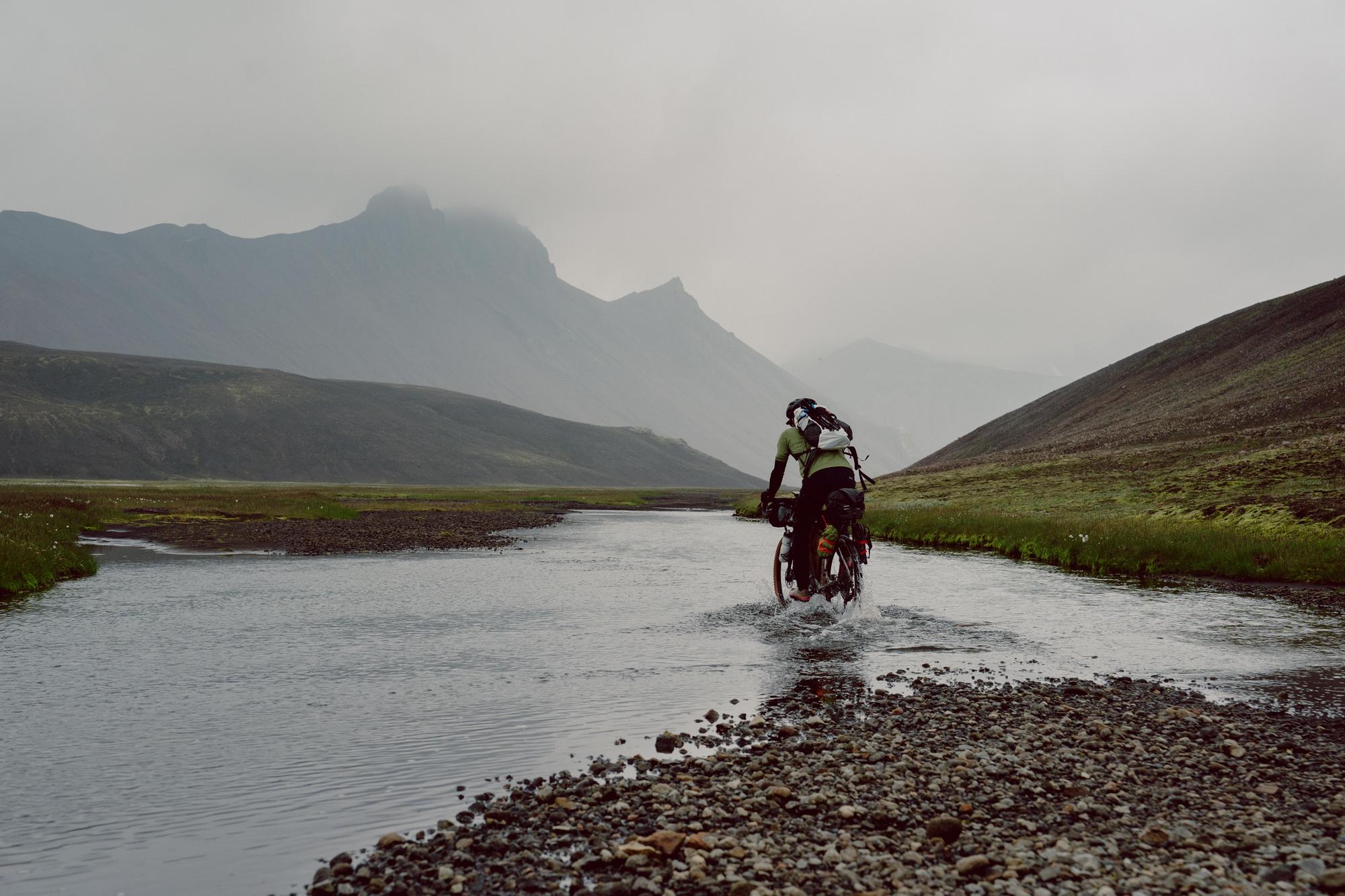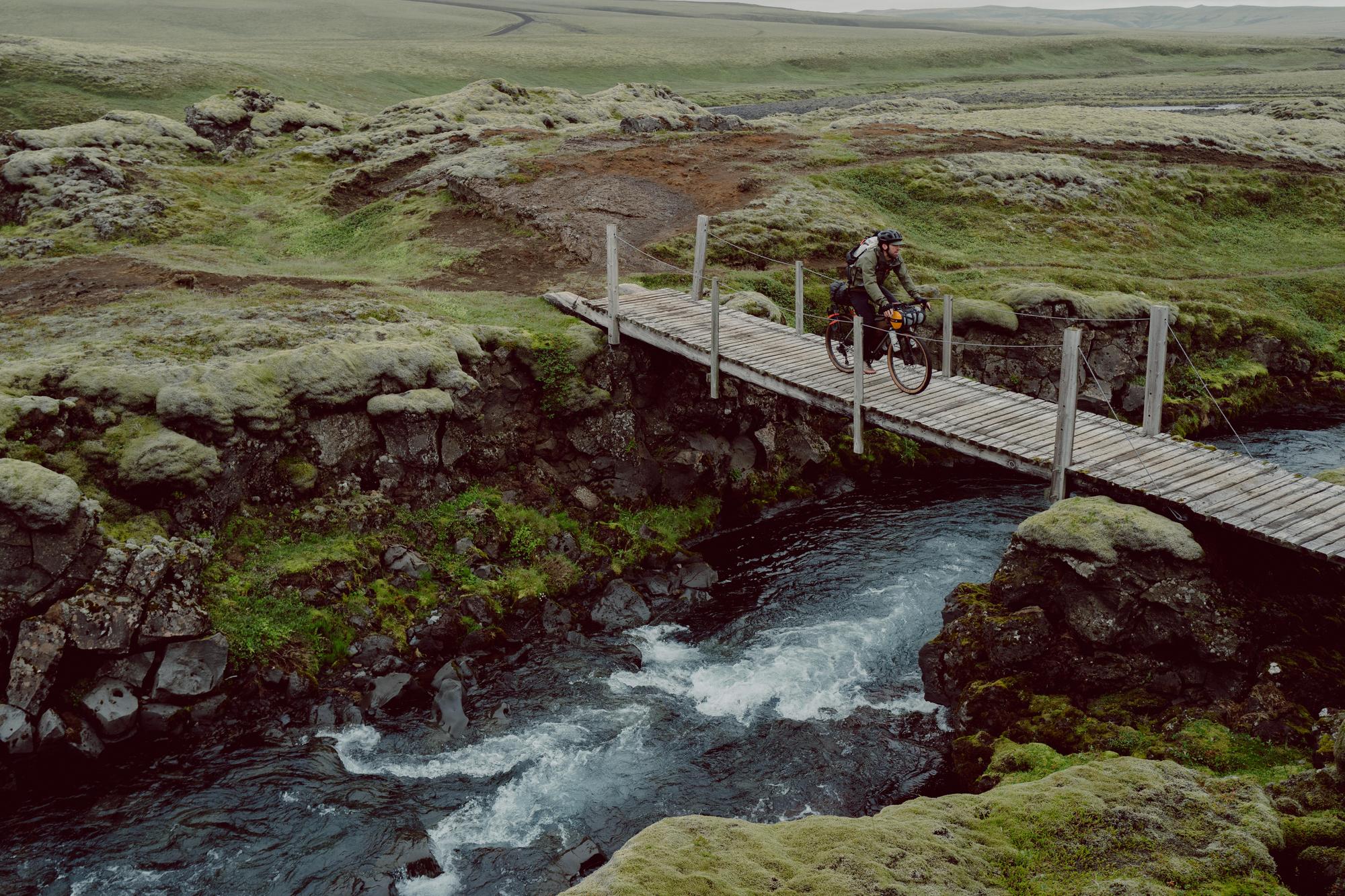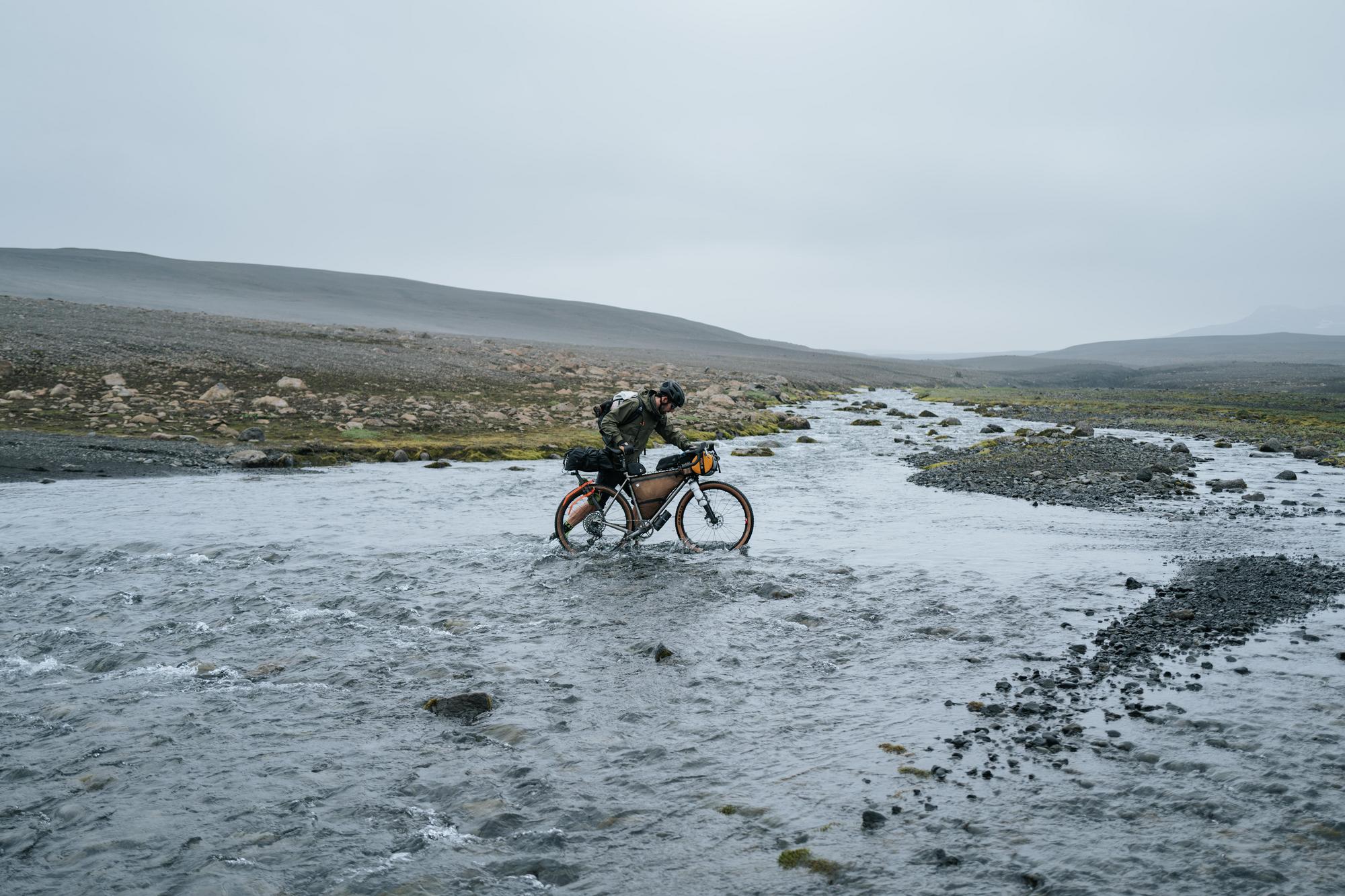Within a few hours, we crested the valley and were welcomed to the sight of the massive Dyngjujцkull shield volcano glacier. The whole area between us was covered in extensive lava flow, and the only way around them was by riding through the deep sand beds that extended to their edges. The outwash plain ends at the slopes of the extinct Urрarhбls volcano. Here, we traded sand for rock and slowly grinded our way upwards. When the glacier which once covered this volcano receded it left behind a boulder field of rock upon which we rode. There were no paths here, simply a dot to follow on our GPS units.
The crater at the summit was our reward for the climb, however, we quickly started our descent towards Kistufell and the promise of a warm dinner.
It may be that, at this point, your interest in riding this route is waning. I may be painting a bleak picture of the challenge you’ll inevitably face; however, let me talk about the positives for a moment.
The highlands of Iceland are unlike any other place on earth. It’s not hard to imagine yourself riding on the surface of the moon while turning the black volcanic gravel beneath your tires. The land is vast and empty. You won’t notice the silence until days two or three and once you hear it, you can’t stop hearing it. The wind is the master of these plains and constantly reminds you that this tumultuous earth below you was created in a violent and shattering moment. In the summer, the sun never sets, and you begin to feel as if you’re living a singular day stretched out over a week.
The following morning we approached our first river crossing of the trip. Depending on the time of year and recent rainfall or snowmelt, the glacial rivers here can be quite dangerous. You have no way of knowing the depth of the rivers due to the silt runoff and the water is beyond cold. Unless you can verify its rideability, your safest option is to dismount and walk your bike through the frigid water. Over the following six hours, we crossed eight rivers and soaked every pair of socks we owned. The landscape continued to be shrouded in clouds as rainstorms came and went. Without realizing it, we had entered Sprengisandur.
This is true wilderness. A post-glacial Mordor where black stones outnumber the stars in the universe. The verb sprengja means “to ride a horse to death.” Early Icelanders knew just how desolate this high desert was and avoided the area at all costs, even choosing to travel far out of their way in order to avoid it.

